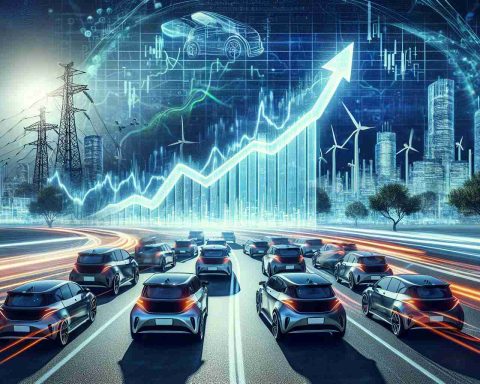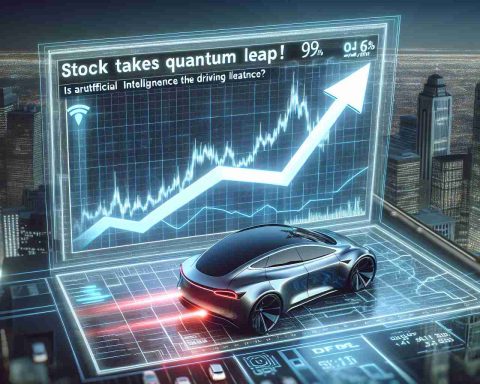Understanding Tesla’s FSD Speed Dilemma
Tesla’s Full Self-Driving (FSD) technology has left many drivers feeling frustrated, particularly regarding the vehicle’s speed settings. Users have reported that, even with the introduction of FSD V13, their cars often drive at significantly lower speeds than what is selected. This has raised questions regarding the functionality and expectations surrounding the driving experience.
Phil Duan, a key figure in Tesla’s AI development, recently clarified the difference between “set speed” and “max speed” in FSD. The former refers to a traditional cruise control concept, while the latter indicates the top limit that drivers expect their vehicles to stay under. Duan explained that FSD focuses on determining the safest driving speed based on environmental cues rather than strictly adhering to user-set speeds.
Tesla is aware of these concerns and plans to address them in a forthcoming software update. This update aims to enhance the vehicle’s highway performance and better manage speed fluctuations, a common complaint among first-time users. However, it seems that adjustable speed settings as previously known may not make a comeback, meaning drivers will need to adapt to utilizing speed profiles instead.
As Tesla gears up for future improvements and updates, users remain keenly interested in how these changes will reshape their driving experiences, especially regarding speed adaptability on the open road.
Understanding Tesla’s FSD: The Future of Self-Driving Speed Control
Overview of Tesla’s FSD Technology
Tesla’s Full Self-Driving (FSD) technology has revolutionized how we perceive vehicle autonomy, but it hasn’t come without its challenges. Among the most pressing concerns is the vehicle’s handling of speed settings, as many drivers report inconsistencies when using the FSD, particularly during highway driving. With the rollout of FSD V13, these issues have come to the forefront, prompting discussions around user expectations versus actual performance.
Key Terminology: Set Speed vs. Max Speed
Phil Duan, a notable engineer at Tesla, has shed light on the terminologies used within the FSD system. Understanding the difference between “set speed” and “max speed” is crucial for Tesla drivers:
– Set Speed: This is analogous to traditional cruise control where a driver selects a desired speed.
– Max Speed: This refers to the upper limit set by the vehicle itself, which is influenced by environmental and safety considerations.
FSD prioritizes driving safely by adapting to surrounding conditions, which can lead to the car driving significantly under the set speed, especially in complex environments.
Upcoming Software Updates
In response to user frustrations, Tesla is actively working on software updates to refine the FSD experience. The anticipated improvements will focus on enhancing performance stability on highways and better managing speed variability—a significant point of feedback from users. However, it appears that the expectation for adjustable speed settings may not return, necessitating an adaptation to the new speed profiles implemented by the system.
Pros and Cons of Tesla’s FSD Speed Management
# Pros:
– Enhanced Safety: Prioritizing safe driving speeds can reduce the likelihood of accidents.
– Adaptive Learning: The system evolves with driving patterns and environmental changes, offering a more tailored experience over time.
# Cons:
– User Frustration: Many drivers feel that the FSD doesn’t meet their speed expectations, impacting the overall driving experience.
– Lack of Control: With the focus on automated responses rather than user-set speeds, some drivers may feel a lack of control.
What to Expect in the Future
As Tesla continues to innovate, several trends are emerging regarding FSD technology:
– Greater Focus on AI Development: Enhanced AI algorithms will likely improve the vehicle’s adaptive capabilities, providing a smoother and more intuitive driving experience.
– Feedback-Driven Updates: Tesla’s approach to addressing driver concerns suggests that future updates will frequently take user feedback into account, aiming for continuous improvement.
Comparisons to Other Self-Driving Technologies
Tesla’s approach to FSD can be contrasted with offerings from other companies in the autonomous driving space. For instance, competitors often allow more direct control over speed settings, leading to a different user experience. Evaluating these differences provides valuable insights into how Tesla’s philosophy prioritizes safety over user preference in speed management.
Conclusion
Tesla’s Full Self-Driving technology represents a significant advancement in automotive innovation, yet it also faces challenges that need addressing. The interplay between speed settings and safety is central to this evolution. As users await upcoming updates, the focus on speed adaptability and performance on the highway remains critical in shaping their experiences with Tesla vehicles.
For more insights and updates on cutting-edge automotive technology, visit Tesla.














